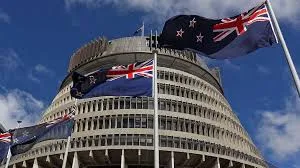A Filipino's Guide to Working and Migrating to New Zealand: Easy Pathways to the Land of the Long White Cloud.
For aspiring Filipinos dreaming of a new life and career amidst the stunning landscapes of New Zealand, the path to working and migrating can be a straightforward journey with careful planning and by targeting the right opportunities. This guide outlines the most accessible pathways, key requirements, and practical steps to help make your Kiwi dream a reality.
Key Pathways for Filipino Workers
New Zealand offers several visa pathways for skilled Filipino workers. The most viable options are tied to having a job offer from an accredited New Zealand employer. Here’s a breakdown of the primary routes:
1. The Accredited Employer Work Visa (AEWV): The Foundation
This is the most common work visa and is often the first step towards residency. To be eligible, you must have a job offer from a New Zealand employer who has been accredited by Immigration New Zealand.
How it works:
* Find a Job: Your primary task is to secure a job offer from an accredited employer. You can find lists of these employers on the Immigration New Zealand website and on major job portals like Seek and Trade Me Jobs.
* Employer's Role: The employer must complete a "Job Check" to ensure no New Zealanders are available for the role.
* Your Application: Once the Job Check is approved, your employer will provide you with a token to apply for your AEWV online.
2. The Green List: Your Fast Track to Residency
New Zealand has a "Green List" of in-demand occupations. If your profession is on this list, you may have a faster or more direct pathway to residence. The Green List has two tiers:
* Tier 1 (Straight to Residence): Occupations on this list allow you to apply for residence immediately, provided you have a job offer from an accredited employer. Examples include many engineering roles, specific IT positions, and certain healthcare professionals.
* Tier 2 (Work to Residence): For these occupations, you can apply for residence after working in New Zealand for two years on an AEWV. This includes roles like registered nurses, electricians, and plumbers.
3. The Skilled Migrant Category (SMC) Visa: A Points-Based System
This pathway is for skilled workers who can contribute to New Zealand's economy. It uses a points system based on your:
- Skills and qualifications
- Work experience
- Age
- A skilled job offer in New Zealand
You need to claim at least 6 points to be eligible. Points can be claimed for your qualifications, New Zealand occupational registration, and income.
4. Philippines Special Work Visa: A Targeted Opportunity
This unique visa is for Filipino citizens who are registered nurses, farm managers, or engineering professionals with a job offer in New Zealand. This visa allows you to work in the country for up to three years.
5. Working Holiday Visa: A Taste of Kiwi Life (Limited Slots)
For young Filipinos (18-30 years old), the Working Holiday Visa offers a chance to travel and work in New Zealand for up to 12 months. This is a highly sought-after visa with a very limited quota.
2025 Quota for Filipinos: 100 visas
2025 Opening Date: March 12, 2025
Applications are processed on a first-come, first-served basis and the quota is often filled within minutes. Be prepared to apply online the moment it opens.
Your Step-by-Step Guide to Making the Move
Phase 1: Preparation in the Philippines
1. Assess Your Skills and Qualifications: Identify which visa pathway best suits your profession and experience. Have your educational and professional qualifications assessed by the New Zealand Qualifications Authority (NZQA) if required for your chosen pathway.
2. Update Your CV and Cover Letter: Tailor your application materials to New Zealand standards. Highlight your skills and experience relevant to the Kiwi job market.
3. Start Your Job Search: Actively look for jobs on New Zealand job websites. Network with recruitment agencies that specialize in placing Filipino workers.
4. Gather Your Documents: Prepare essential documents, including your passport, birth certificate, marriage certificate (if applicable), police clearances, and medical certificates.
5. Financial Preparation: Ensure you have sufficient funds to cover visa application fees, relocation costs, and initial living expenses.
Phase 2: The Visa Application Process
1. Secure a Job Offer: This is the most crucial step for most work visa pathways.
2. Complete the Online Application: Once you have a job offer and the necessary documentation, you and your employer can proceed with the visa application through the Immigration New Zealand website.
3. Pay the Visa Fee: Fees vary depending on the visa type. Be prepared to pay online using a credit card.
4. Wait for a Decision: Processing times can vary. You can track the status of your application online.
Phase 3: Arriving and Settling in New Zealand
1. Find Accommodation: It's advisable to arrange temporary accommodation before you arrive. Websites like Trade Me Property and Realestate.co.nz are popular for finding rentals.
2. Open a Bank Account: You will need a New Zealand bank account to receive your salary. Major banks include ANZ, ASB, BNZ, and Westpac.
3. Get an IRD Number: An Inland Revenue Department (IRD) number is essential for tax purposes. You can apply for this online once you have a bank account.
4. Settle In: Familiarize yourself with your new community, public transport, and local amenities.
Financial Planning: What to Expect
Visa Application Fees:
Visa fees can range from approximately NZD $211 for a visitor visa to over NZD $4,000 for some residence visas. The Accredited Employer Work Visa fee is NZD $750.
There may be additional costs for medical examinations, police certificates, and document translations.
Cost of Living:
The cost of living in New Zealand is generally higher than in the Philippines. Here's a rough monthly estimate:
Single Person: NZD $3,000 - $4,500 (approximately PHP 105,000 - 158,000)
Family of Four: NZD $5,500 - $7,500 (approximately PHP 193,000 - 263,000)
*Note: These are estimates and can vary significantly depending on your lifestyle and the city you live in. Auckland and Wellington are generally more expensive than other cities.*
By understanding the pathways, preparing thoroughly, and being proactive in your job search, your dream of working and living in New Zealand is well within reach. Kia kaha (stay strong) on your journey!








